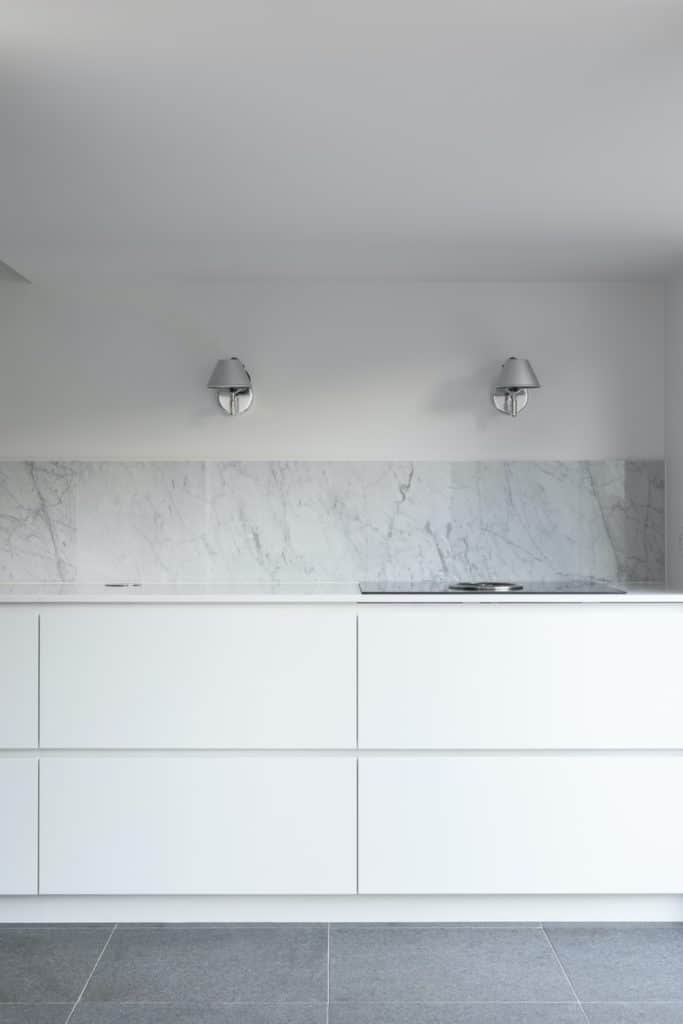Choosing flooring material when remodeling your kitchen or bathroom can be a daunting task. Now, you might get confused between porcelain tile vs ceramic tile, and understandably so.
For a lot of people, both these terms are frequently – and erroneously – used interchangeably. That is quite understandable because both porcelain and ceramic tiles have pretty similar properties as well. However, there are also many significant differences between the two.
Porcelain tile and ceramic tile are sub-divisions of a bigger group of tiles known as ceramics. However, the modern tile industry has classified porcelain tiles as separate categories because they happen to fulfill specific criteria.
This guide enlists the unique characteristics of the porcelain tile and the ceramic tile. Further, you can use this to determine which one suits your needs the best.
What Are the Main Differences Between Porcelain and Ceramic Tiles?

Despite the similarities that they share, there are also many significant differences between porcelain tile vs ceramic tiles. To begin with, porcelain tiles tend to be less porous and much denser than ceramic tiles.
That is mainly because of the way they are produced. These properties make them better candidates for both outdoor and indoor purposes. They are also much more resistant to mechanical stress as a result.
Ceramic tiles are undoubtedly an excellent option for interior walls and floors. However, porcelain tiles are even more advisable in there as well. It primarily holds if we consider places facing a lot of traffic, such as kitchen floors, commercial applications, and hallways. Porcelain tiles admirably withstand a lot of pressure and you can’t scratch them or chip them easily.
How to Differentiate Between Porcelain and Ceramic Tile?
At present, there are no regulations for these products to be labeled as “porcelain” based on particular features. The American Society for Testing and Material (ATSM) offers a voluntary certification process for manufacturers producing porcelain. You can use certain rules to differentiate between porcelain and ceramic tile, which have been listed below.
- Porcelain tiles usually possess a uniform color throughout their thickness. Ceramic tiles, with their glazed surface coloring, could have a different color underneath.
- The unglazed surface of ceramic tiles feels rough, whereas the finish of porcelain is much smoother.
- Ceramic tiles tend to be lighter than porcelain tiles of the same size due to their lower density.
What are the Benefits of Using Porcelain Tiles?

There are several benefits of using porcelain tile vs ceramic tile. For one, their high density makes them very resistant to penetration by liquids. As a result, they repel water much more efficiently than other kinds of ceramic. They are also notably resistant to various types of stains and discoloration.
According to the international standard for porcelain tile, their water absorption rate should be less than a tenth of 1%. Conversely, ceramic tile usually has a water absorption rate of over 3%. As a result, you should not use porcelain tiles outdoors.
Porcelain tiles are dense, solid, and among the toughest flooring options you can find out there. They can withstand heavy pressure and equipment use. They are fireproof and can easily last for over two decades if properly taken care of. Due to their properties mentioned above, they are relatively easy and economical to maintain.
Likewise, you can also clean it easily using a standard mop or moist cloth. On the other hand, periodic disinfection using a pH balanced solution can work wonders as well. Even if you damage porcelain tile, you can easily remove and replace that particular tile. It is advisable to keep a box of extra tiles during installation for this purpose.
What are the Disadvantages?
The porcelain tile has certain drawbacks associated with it as well. First of all, they are still relatively expensive compared to other ceramic options. As a result, installing them can cost you anywhere between 25 to 50 percent more money. They also tend to be a bit too heavy, making the installation process more difficult.
Furthermore, it can also be hard to obtain the highly accurate cuts required for architectural work. The lines between the tiles are somewhat vulnerable to damage. Even if you care for it a lot, the features of a porcelain tile can get distorted due to humidity over time.
What Are the Benefits of Using Ceramic Tiles?

Glazed ceramic tiles possess a protective layer that makes them mostly immune to stain and water penetration. As a result, they are an excellent option for bathrooms and kitchens. Ceramic tiles also come with a much wider variety of design options, such as patterns and colors. You can also cut them into various shapes like triangles, rectangles, and planks.
Besides, they can last for many decades if properly taken care of. Due to their solid surface, they are resistant to allergens like dust and pollen. Although they are a bit on the expensive side, they do add a lot of value to your place.
What are the Disadvantages of Using These?
Unfortunately, due to their hardness, ceramic tiles can be quite difficult to clean and maintain. You can manage this by installing them in places like in front of the sink, where people need to stay upon them for longer durations of time.
Similar to the porcelain tile, the ceramic tile tends to be rather heavy. As a result, you should not use it on the upper levels of a building. If you decide to use them there, you need to get expert help to ensure that the floor joists below are not experiencing too much stress.
Porcelain Tile vs Ceramic Tile: Which One Should You Choose?
You should always choose a tile that not only looks appealing but is also durable in the long run. If you need to tile your kitchen or have children or pets in the home, then the porcelain tile is a much better option owing to its superior sturdiness.
However, when it comes to your bathroom, you can consider any of the points listed above to choose between porcelain tile vs ceramic tile.


